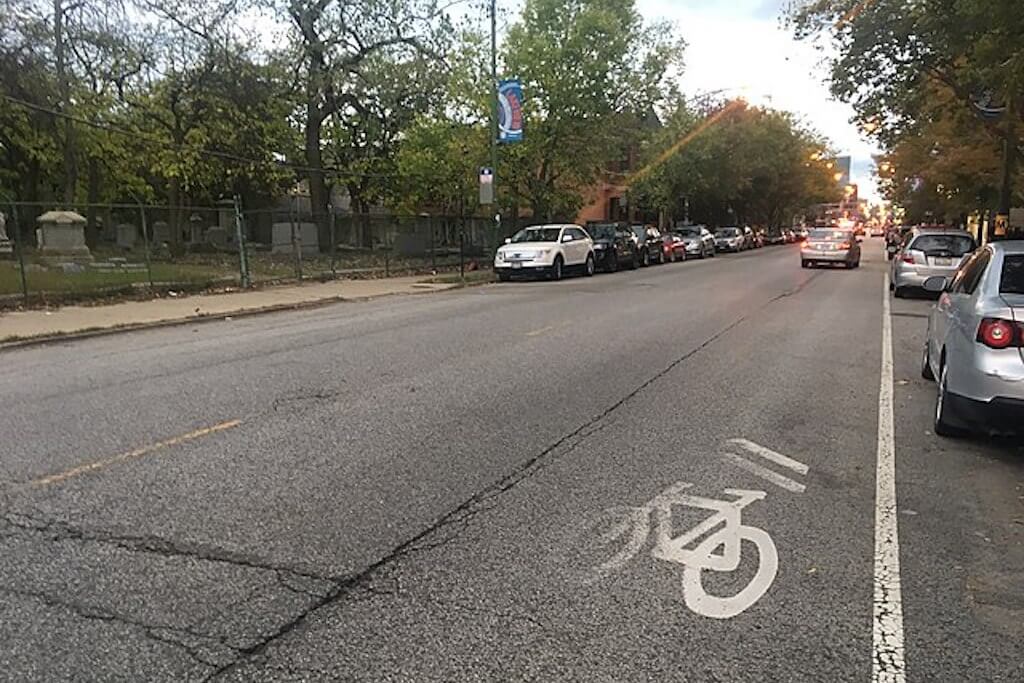Autumn Gear Guide
Find inspiration in our Gear Guide that will keep you out on your bike through wind or rain.
Download NowCity cycling is a fantastic way to get around, but urban streets present unique challenges for cyclists and there are few things that weigh more heavily on a commuter’s mind than navigating a door zone. One of the most significant dangers is the so-called door zone, which is an area next to parked cars where […]
City cycling is a fantastic way to get around, but urban streets present unique challenges for cyclists and there are few things that weigh more heavily on a commuter’s mind than navigating a door zone. One of the most significant dangers is the so-called door zone, which is an area next to parked cars where a suddenly opened car door can lead to a potentially catastrophic crash. Even a safe protected bike lane can’t keep a cyclist protected from this imminent danger.
Each year, hundreds of cyclists are injured or killed in such crashes. Statistics suggest anywhere from 16 to 31 per cent of all bicycling crashes happen in the door zone making it crucial to avoid this area or learn to navigate it properly.
Here are some key tips to help you navigate the door zone safely while cycling in the city:
The door zone is the three- to five-foot area next to a parked car where doors can open suddenly. Imagine, it’s the length of a standard car door when fully open. To prevent collisions, always ride on the left side of the bike lane, ensuring that you maintain a distance of at least four feet from parked cars. This position significantly reduces the risk of a door being flung open into your path.
While staying clear of the door zone is essential for your safety, there are situations where you may need to take control of the traffic lane, a technique known as “taking the lane.” This maneuver is crucial when maintaining the recommended four-foot buffer from parked cars isn’t possible, or when you want to ensure your safety and assert your rights as a cyclist.
While it might be tempting to weave in and out of empty parking spaces to hug the curb, this erratic behavior can confuse motorists and make you less visible. Instead, maintain a safe and predictable line, reducing the chances of unexpected door openings.
Some streets may have bike lanes placed too close to parked cars, putting cyclists entirely within the door zone. Contrary to what some police officers may believe and definitely the majority of motor vehicle drivers, the law only dictates that cyclists should ride as close to the right as safety permits. If the bike lane places you at risk, don’t hesitate to ride in the traffic lane, taking only as much space as needed to ensure your safety.
If you choose to ride within the door zone, remain vigilant. Keep an eye out for parked car occupants, and be prepared to come to a sudden stop without swerving. Staying attentive is key to avoiding dangerous situations. Assume every driver will not look or care about your well-being.

Road sharrows
Although Sharrows, or “shared arrows,” have been much-maligned over the years, even here at Momentum, when these road markings were first introduced it was to encourage motorists to provide cyclists with space and discourage riders from venturing into the door zone. These markings serve as a reminder to motorists that cyclists are entitled to their share of the road. So, in this instance, when used properly, there is some degree of assistance that they provide. If there is a notorious door zone in your area, consider asking your local representative or city works department to add sharrows as large and bright as possible.
Familiarize yourself with your state’s road rules and regulations, especially those pertaining to cycling safety. In some areas, bike lanes include angled lines that signal cyclists to stay outside the door zone. Remember that dooring is illegal in most states and provinces, such as Ontario, New York and California. If you’re involved in a dooring incident, contact the police, file a claim with the driver’s insurance company, and review what else to do here.
Navigating the “door zone” as a city cyclist requires vigilance, awareness, and assertiveness. By following these tips and taking steps to promote safer cycling conditions, you can significantly reduce the risk of encountering a suddenly opened car door and enjoy a safer and more confident cycling experience in urban environments. Always prioritize your safety and adhere to the rules of the road to protect yourself and others.
Find inspiration in our Gear Guide that will keep you out on your bike through wind or rain.
Download Now
Leave a comment